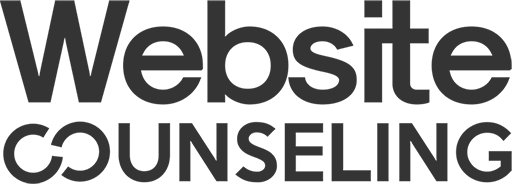
So, you are finally ready to take the next step for your small business: you want to launch a website. As a small business owner, coach or entrepreneur, this might be out off your comfort zone. Maybe you never worked with a developer before or using a website content system like WordPress was never part of your job. If this is the case, you will have a lot of questions:
Should I find a developer? Or first hire a designer?
What’s a good budget?
What are the necessary steps to launch a website anyhow?
Over the course of my professional life, I have talked to many business owners who were in this exact situation and these questions come up all of the time. This is why, I decided to write this article. I will answer your questions and help you to find the best developer for your budget.
In this article you will learn:
- How to find out what you really need on your website to communicate a clear picture.
- How to find and reach out to a developer.
- How a legitimate website estimate looks like and which details should be included to make sure that you get the best result for your investment.
You can download our website requirement document here →
Or let us review the website estimate you got from your developer to get an opinion from an expert. You can find the free estimate review here →
Step 1: Preparation
Find out what you need and write it down.
The first step to your perfect website is to define what you need. I can’t tell you how often clients come to me and ask “How much do you charge for a website?” without giving me any specifics. It’s like asking, “How much does a house cost?”. If you don’t want to keep hearing the same answer “It depends”, then you better do your homework and define what you need. Go through the list below and write down your findings. This will give you clarity on your requirements and at the same time you will have prepared the perfect website requirement document for your future WordPress developer.
Website Goals
As a small business owner, you always have to make sure that you make the right investments to grow your business. Your website goals define the reasons why you need a website and how it will help you to achieve business growth. Your goals will also help you to stay focused on the most important requirements.
Here are some examples for website goals:
- Getting leads
- Generating revenue through online sales
- Branding
- Contact possibilities for interested users
Functionalities
Your goals help you to define the necessary functionalities for your website. If you want to sell a product, you will need an eCommerce functionality, for instance. Functionalities are often the most expensive part of a website. So make sure that your requirements really help your business grow by connecting them to your overall goals.
Here is a list of the most common functionalities for entrepreneurs or small business websites:
- Contact form
- Newsletter registration
- eCommerce functionality
- Pop-ups for lead generation
- Forms for lead generation (e.g. lead magnets)
- Social Media channel integration
- Video integration
Pages and modules
A website’s structure is defined by pages and modules. As your developer will create the initial set up for you, it helps to define which pages and modules you require for a fully functional online presence.
These pages and modules are usually part of a website for small businesses:
- Homepage
- About Us
- Services/Products
- Contact Page
- Blog
- Testimonials
- Landing Pages (for Ads)
- Events / News

Design – The fun part!
The design part is often the most fun part and you have to pay attention not to get lost in the details.
I’m assuming here that you already have a logo and a basic corporate design for your company (e.g. colors and fonts). Your logo and your design principles define the basics for your website design. This means that your website should have a similar look. If you don’t have a logo or any brand guidelines yet, please don’t leave this task to your web developer. Get a proper designer to do this.
There a two ways to create a website design:
A) You can hire a website designer to design a layout from scratch.
B) You choose a pre-made layout (so-called website themes) that matches your design principle and make smaller customizations.
For your first website, I highly recommend solution B – using themes. The reason for this is that customized layouts are always a lot more expensive. Investing in small customizations for the pre-made layout is often enough and you won’t need to break the bank for your first website.
There are a many platforms that sell website themes. Here are some examples:
Themeforest | Themify | Themeisle | Themegrill
You should pick 1- 3 layouts that match your brand identity and get some input from friends and family. Seriously, don’t do this alone. Show your ideas to friends with an eye for design or even to the designer who created your logo.
Website requirement document – Bring it all together
Good work! You have defined the structure for your website, this is a crucial step. You can now write down all your needs and wishes into a document. I call this document the website requirement document. To make it 100% perfect to use as a briefing document for your developer, you need to add some more information about the technical setup, the timing and the budget.
A perfect website requirement document should contain the following information:
- Numbers of pages
- Modules
- Functionalities
- The theme(s) you picked
- Hosting and/or domain requirements
- Budget restraint
- Timeframe
Feel free to use our Website Requirement template that you can download here →
Step 2: Developer wanted
Let the developer search begin!
If you have followed all the steps above, you are ready to find the perfect developer. Finding the right candidate is not always easy, so plan a couple of weeks for this process.
From my experience, personal references are still the best way to find a reliable and trustworthy person. Ask your contacts if they can recommend a good developer or if they know someone who recently launched their website.
If you don’t know anybody who can give you a recommendation, you can search online. There are a lot of platforms where you can look for and hire a skilled developer. Have a look at this article from WP Gurus with a good overview. If you go down this route, make sure that you check the developer’s reviews and look at work examples. This will give you a first impression of their expertise.
I recommend to shortlist at least 3 developers and ask for an estimate. This will help you compare the services and prices. Use the requirement document as your briefing for the developer. It has all information that they need to send you a detailed and customized estimate.
Step 3: Review
Review the estimates to choose the best developer.
Once you hear back from your website developers, it’s important to review and compare the estimates they sent you.
An estimate tells a lot about the person behind it and can already give you a glimpse into how professional and structured they are. I have personally writen and seen hundreds of estimates and the differences are often huge. The most important part is that the developer is capable of writing an estimate in a way that you can understand it. There is no need for technical specifications that only developers know. Ask them to “translate” the details for you if you find expressions that are too technical. Seriusly. don’t be embarrassed to ask for explanation. It’s crucial that your future developer speaks your language.
After you shortlisted up to three developers, schedule a call with them to go through the estimate. Talking to the developer is still the best way to find out if you feel comfortable working with them.

Red flags vs. best practice
Here are some red flags you should look out for:
- There is only a sum but no clear definition of what’s included in the estimate.
- The developer sent the estimate as plain text in an email instead of a proper estimate document.
- The developer didn’t integrate any of the requirements you sent him/her in your document. The estimate seems to be very standard and not custom-made for you.
A good estimate should incorporate the following elements:
- A detailed information of all functionalities, pages, modules and requirements that are included.
- The number of feedback loops that are integrated in the prize.
- A dedicated training for you on how to use the website.
- A timing and rough project plan.
- Some explanation of how the developer will test the website and how they will integrate your feedback.
- The hosting provider the developer will use (if you need this).
- A statement on how external costs (e.g. plugins, images) will be handled.
Are you still unsure if the website estimate covers everyhing you need for your first website? Or are you struggling to decide if the website costs match your requirements?
Our free website estimate service can help. Our experts will review your estimate and compare it with your requirements, telling you if something is missing or if everything is a-ok to hire the developer of your choice.
Check out the free estimate review service here →
Love Your Website.
And Your Customers Will Love You.


